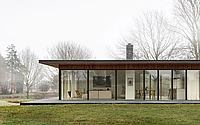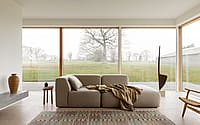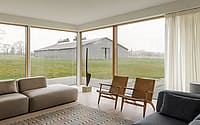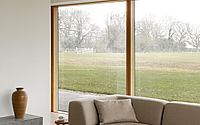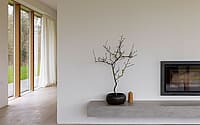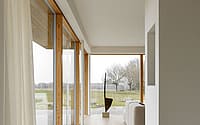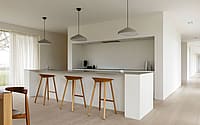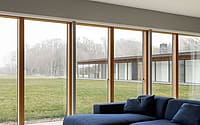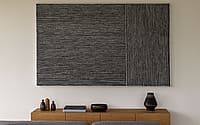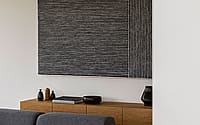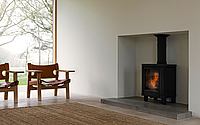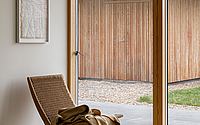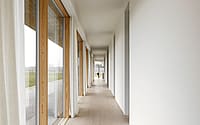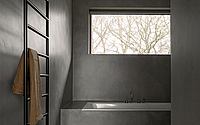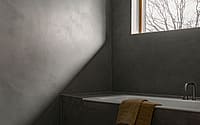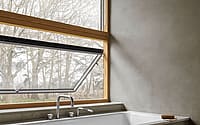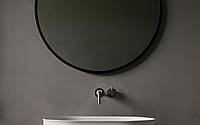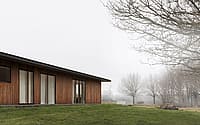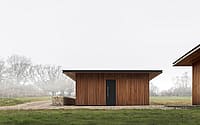Pavilion House by Norm Architects
Pavilion House is a single-story house located in Suffolk, United Kingdom, designed in 2021 by Norm Architects.

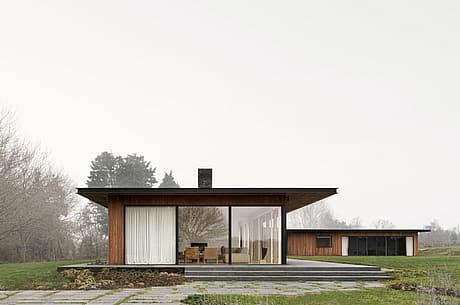
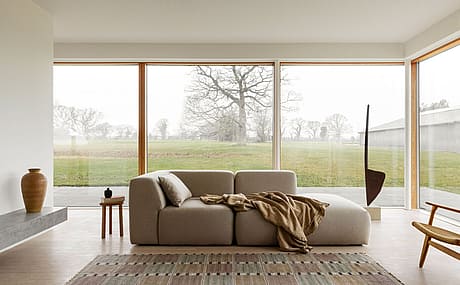
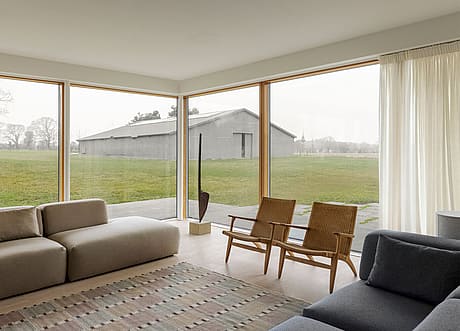
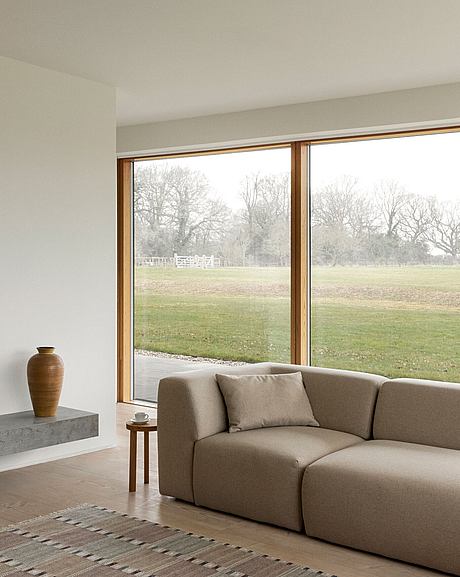
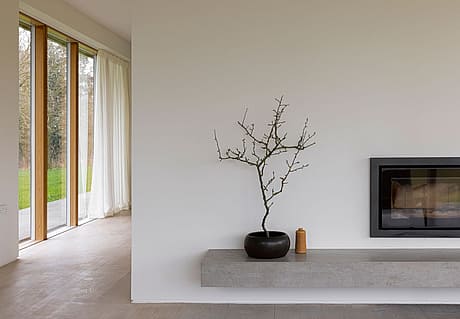
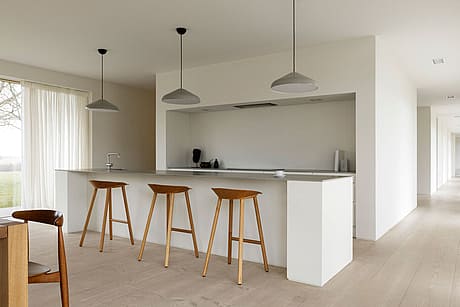
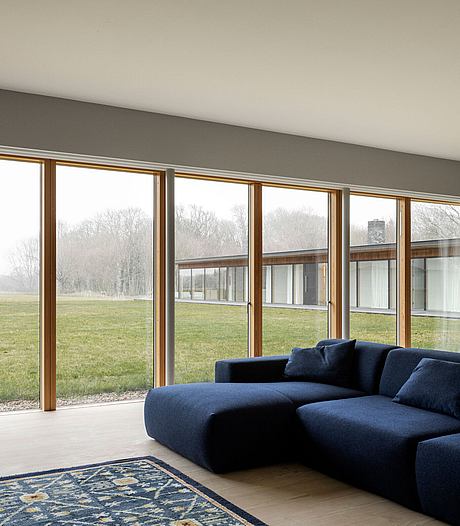
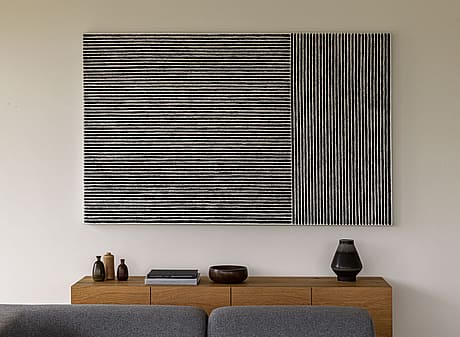
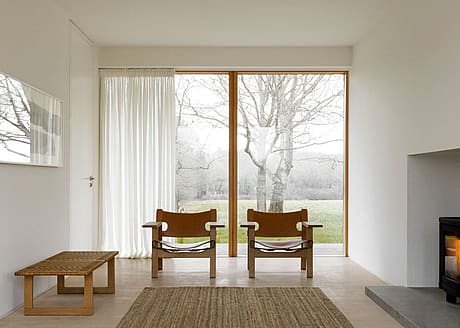
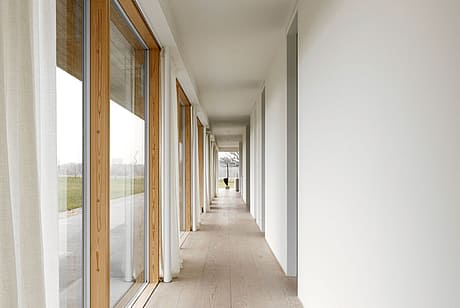
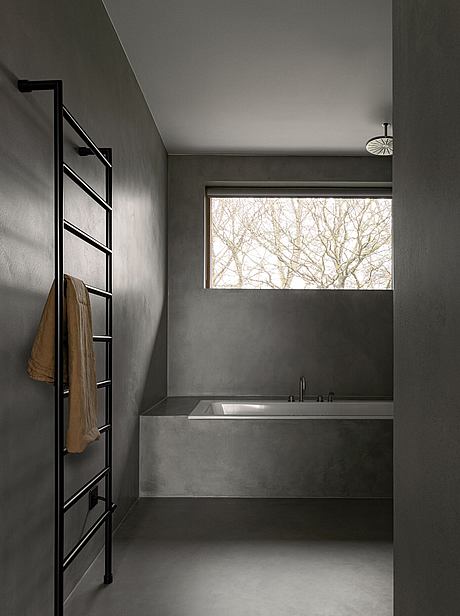
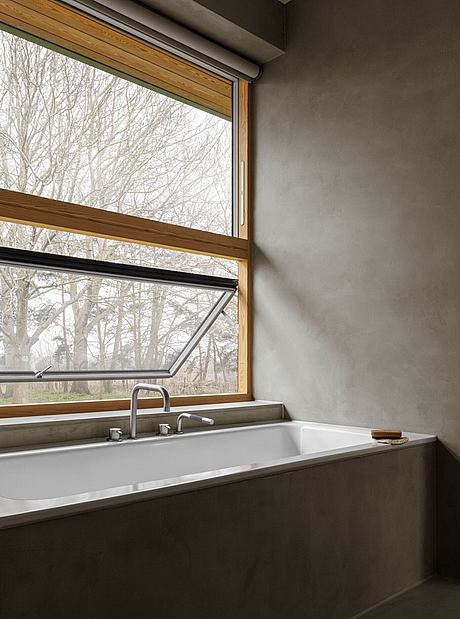
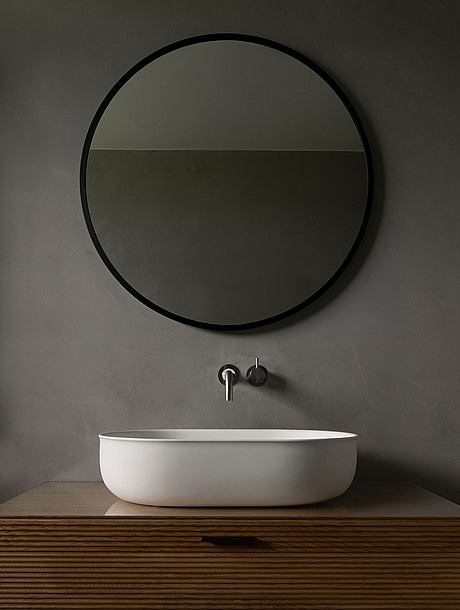
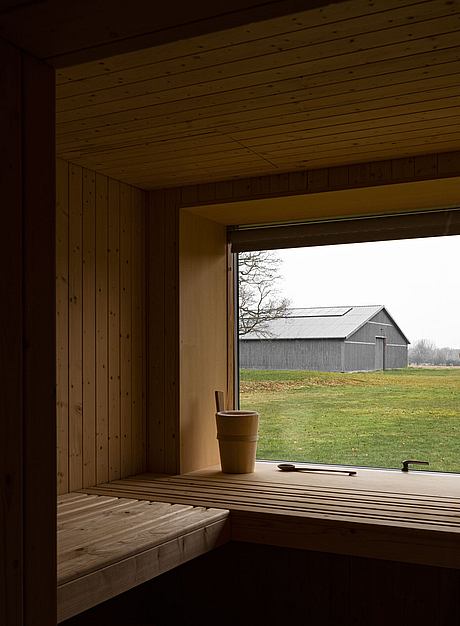
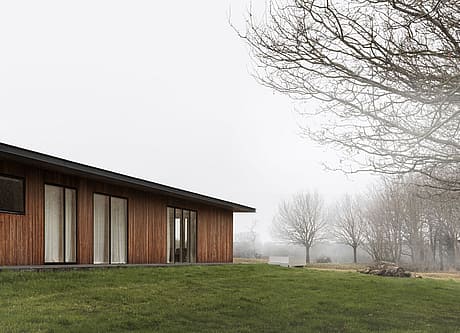
Description
Elegantly set in the beautiful East Anglian landscape, on the border of a working farm in Suffolk (UK), the Pavilion House is a real inside-out construction. The shapes and materials of the interior all carry a certain tranquillity and simplicity, while every room offers a different glimpse of the outside. There is a certain humility within the architecture, acknowledging that the big-ticket item in the setting is indeed the countryside; it doesn’t try to compete with it, but frames it instead.
Introduction
The design of the house is all about transparency; nature becomes an integral part of the interior. With a delicate and minimized steel construction, wooden window frames and a vertical cladding in local larch that corresponds with the existing structures on the site, there is a harmonious meeting between old and new buildings. The exterior part of the windows and fascia board of the roof in dark carbon grey metal make the steel as subtle and discrete as possible so that the wooden character of the house becomes the dominant expression.
Further increasing the presence of the house, the existing annexe has been extended to create a studio, with windows in a rhythm that responds to the fenestration of the main house and a simple L-shaped shingle border, bringing the buildings closely together. The additional space now offers a music room with a grand piano, a comfortable TV area as well as a quiet workspace. Elsewhere, a sauna has been added, with grand views over the fields.
Designed by Norm Architects back in 2017, but never completed, the current homeowners took on the project of bringing back the building to its original vision. “It is hard to think of this project outside of the pandemic. To have had a period of time in which it was possible to concentrate fully on something which had stalled, but had so much potential, was a real privilege,” they say of the process.
The internal layout of the house is an open space plan with long views, divided into different functional zones by freestanding elements: only a central brick core with a wood burning stove divides the cosy living room from the large kitchen and dining area.
Pavilion House cannot be thought of outside of the context of the surrounding countryside and the furnishings, as a result, follow suit. The feeling of the space is one of tranquillity, and it has therefore been important that the entirety of the interior plays a key role in tying together the contextual and spatial characteristics of the project.
Wherever you find yourself in the house, there’s a seamless transition between its different functions. Wherever you choose to look out, you’ll find yourself fully immersed in the glorious surroundings; the architectural structure never spoils the stunning views.
A key decision was to half the size of the existing barn, as its 5000 sqm dominated the site and was quite oversized. The new homeowners found it difficult to imagine how it could ever be used appropriately within the context of a residential, as opposed to agricultural, use. The barn that was left standing was repurposed to carry a generous number of solar panels for electricity generation with ample storage batteries inside the building, together with a rainwater system. Today, the barn has thus become a veritable eco-workhorse.
When you are visibly surrounded by nature, you compete with it at your perils, why color hasn’t been added to the walls – reinforcing the integration of interior and exterior.
In the bathrooms, darker colours have been introduced to create a sense of sanctuary and a feeling of separation from the surrounding country- side, which then becomes even more magical and picturesque when viewed through the carefully placed windows.
The use of polished concrete adds a tactile sensation to the room, while acting as stimulating contrast to the warm elements of wood.
Photography by Jonas Bjerre-Poulsen
Visit Norm Architects
- by Matt Watts